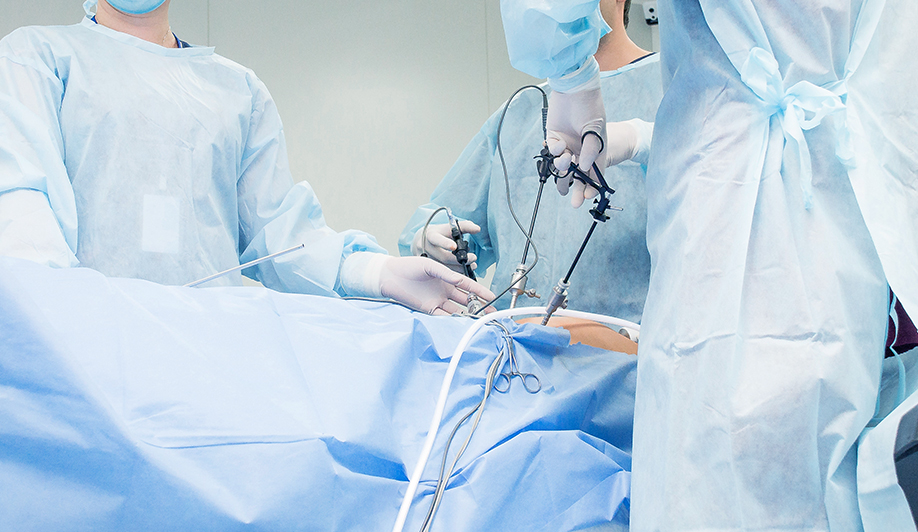
Laparoscopic surgery has
many advantages over
traditional open surgery.
It has many advantages over traditional open surgery because
it involves making a small hole in the skin, about 0.5 to 1 centimeter,
and using a specially designed, high-performance video camera and
specialized surgical equipment to see through the hole.
Benefits of Laparoscopic Surgery
Benefits of Laparoscopic Surgery
 Less pain after surgery.
Less pain after surgery. Smaller scarring due to the use of small incisions.
Smaller scarring due to the use of small incisions. The recovery period is short.
The recovery period is short. Good visibility during surgery.
Good visibility during surgery. Fewer complications.
Fewer complications.
Laparoscopic Appendectomy
KEY POINT
The common term 맹장염 is a misnomer for appendicitis.
Previously, the appendix was removed by making a 5 to 10 centimeter incision
in the skin of the right lower abdomen, cutting through the muscles and fascia under the skin,
and then opening it up to remove the appendix, but nowadays, laparoscopic appendectomy
using the latest surgical cameras and laparoscopic surgical instruments is the most common method.
Laparoscopic Cholecystectomy
-
 Cholecystectomy is a surgery that literally removes the gallbladder.
Cholecystectomy is a surgery that literally removes the gallbladder.
-
 This surgery is usually performed on patients with cholelithiasis or gallbladder polyps.
This surgery is usually performed on patients with cholelithiasis or gallbladder polyps.
-
 Cholelithiasis can cause stones to form in the gallbladder, leading to gallbladder inflammation and cancer. Polyps in the gallbladder can also become cancer, so a cholecystectomy is needed for polyps larger than 1 cm, as for cholelithiasis.
Cholelithiasis can cause stones to form in the gallbladder, leading to gallbladder inflammation and cancer. Polyps in the gallbladder can also become cancer, so a cholecystectomy is needed for polyps larger than 1 cm, as for cholelithiasis.
-
 Previous open surgery involved making a 10 cm incision in the skin of the right upper abdomen and then incising all the underlying fascia and muscles before performing surgery. Postoperative pain was severe and hospital stay was required for more than one week, but recently, laparoscopic cholecystectomy has been performed using laparoscopic instruments as the basic surgical technique.
Previous open surgery involved making a 10 cm incision in the skin of the right upper abdomen and then incising all the underlying fascia and muscles before performing surgery. Postoperative pain was severe and hospital stay was required for more than one week, but recently, laparoscopic cholecystectomy has been performed using laparoscopic instruments as the basic surgical technique.















